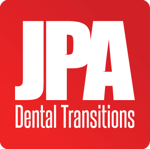 Today, more than ever, it is important to ensure that every dollar you invest is a wise dollar spent. The average person spends countless hours researching any major investment or future purchase. Why should an investment made in your professional career be any different? Fact is, the largest investment you will make in your professional career, other than education cost, will be on your dental practice setting. Whether you start a fresh practice or purchase an existing practice, it is absolutely necessary that you spend the adequate time and effort to make sure your investment is sound.
Today, more than ever, it is important to ensure that every dollar you invest is a wise dollar spent. The average person spends countless hours researching any major investment or future purchase. Why should an investment made in your professional career be any different? Fact is, the largest investment you will make in your professional career, other than education cost, will be on your dental practice setting. Whether you start a fresh practice or purchase an existing practice, it is absolutely necessary that you spend the adequate time and effort to make sure your investment is sound.
The process of researching your investment is called due diligence. Due diligence is simply gathering all the information needed to make an informed decision about something, meticulously reviewing that information, and ultimately arriving at a decision. Often, doctors will work with advisors that specialize in the area of practice brokerage, acquisitions, and transitions to ensure that the due diligence is compiled and processed correctly, because a good decision cannot be made on bad information.
Do Your Due Diligence Homework
So where do you, as a young doctor interested in owning your own practice begin this process? Traditionally, due diligence was based on a visual inspection of the practice, a random sample review of patient charts, tax returns, and the good word of the selling doctor. Today, however, due diligence looks at not only the business and numbers of the practice but also the clinical aspect as well. For example, any doctor interested in purchasing an existing practice should request and review information such as, but not limited to: a minimum of three (3) years of tax returns for the practice, three (3) years of profit and loss statements (P&L’s), a production report by provider, a production report by ADA code, a current fee schedule, active patient count, a copy of the lease agreement (if the real estate is leased), current employment agreements, and equipment lists, among other information. These documents will give any interested doctor a vast amount of information based on the business and the numbers of the practice. This information is important to you because this is the information that a third party bank is going to use to base their decision on whether or not to fund the transaction. It is important that you, like the bank, understand exactly what is transpiring in that practice, but sometimes the numbers do not tell the entire story.
Consider the Cash Flow
It is a known fact that when you purchase a practice, you are purchasing a number of different things: cash-flow, a patient in the chair, a procedure mix, and a clinical treatment intensity, among others. Cash-flow is simply the ability to produce in a given practice. It is a review of the operating expenses of a practice (overhead), compared to the production of the practice to arrive at the net cash-flow. Having a healthy cash-flow is necessary due to the fact that the debt service of the practice purchase is paid out of the net income. Also, it is the determining factor for many whether a practice is a feasible option for a doctor or not. The patient base or the patient in the chair is also closely tied into the cash-flow. The ability to walk into an office from the date of purchase and begin treating patients is what differentiates a practice purchase from a cold start practice. This flow of patients from day one is what generates the cash-flow and allows you, the purchasing doctor, to service the debt of the purchase price and earn a living. Let’s face it, if you cannot produce enough in a practice to net 25% of gross collections after all of the practice debt service, the practice is either priced too high, has an out of control overhead, or has some serious busyness problems; it might be time to reconsider the purchase.
Next is the Procedure Mix.
When you purchase an existing practice, you also purchase a pre-existing procedure mix profile. Perhaps it is a practice that is heavy in restorative and does very little endodontics, or perhaps it is a practice that is heavy in periodontal treatment and does very little cosmetic dentistry. Each practice has its own individual procedure mix, and should be known and understood by you, the purchasing doctor. If the practice procedure mix is not a match with the clinical areas in which you wish to practice, you may spend a great deal of time “rebuilding” the practice into a new practice, effectively dismissing a great deal of the existing patient base that you purchased. A diligent review of the procedures by ADA code will give you a great understanding of the procedure mix and profile of the practice. The final aspect is the clinical treatment intensity of a practice. This area is somewhat of a new area of due diligence, because until recently, it was rather difficult and inefficient to measure or analyze. The clinical treatment intensity of a practice is simply how the dentistry is done in a given practice. For example, is the existing doctor more inclined to place a large filling or to crown the tooth in question? Is the hygiene department consistently taking four (4) bitewing x-rays on adults or only two (2)? Is the practice utilizing fluoride and offering tooth whitening aggressively? These are all questions that could be painstakingly asked individually. However, in years past there was not a good way to efficiently gather the information and compare it to other practices to make an informed decision regarding the clinical intensity of a given practice. PracticeBooster® is a tool that is used for this purpose and is designed specifically to assess the clinical treatment intensity of a practice by looking at approximately fifty (50) unique aspects of the practice. With the uncertainty of all investments in today’s marketplace a new tool that shines additional light on a practice is a welcome addition to a new or existing buyer’s due diligence package.
As a doctor seeking an existing practice, do not be intimidated by the current economic trends. Rather, take the opportunity to dig deep, ask questions, and do your due diligence up front. An investment on the front end of time and money to engage knowledgeable advisors and study the due diligence documents will pay large dividends in the long run. Simply put, use the tools and advisors available to you to find out exactly what is going on in a practice and if it is an appropriate purchase for you. Now that clinical treatment intensity can be more efficiently measured and reviewed, your opportunity for success is greatly enhanced. For more information on PracticeBooster® designed by Dr. Charles Blair, visit www.PracticeBooster.com.

 980.283.7355
980.283.7355












Comment